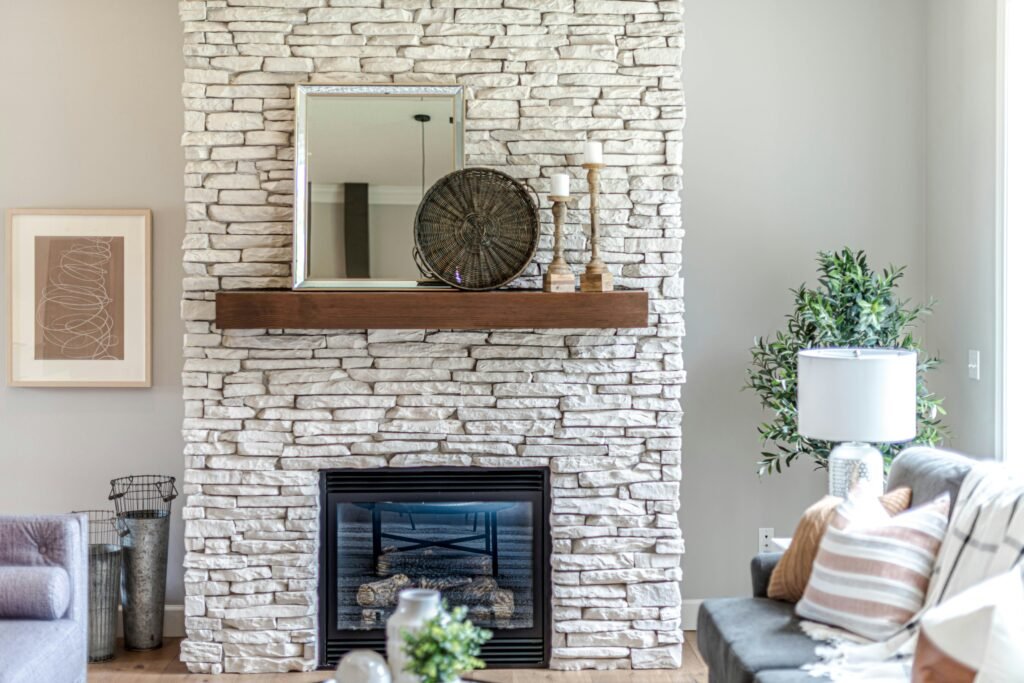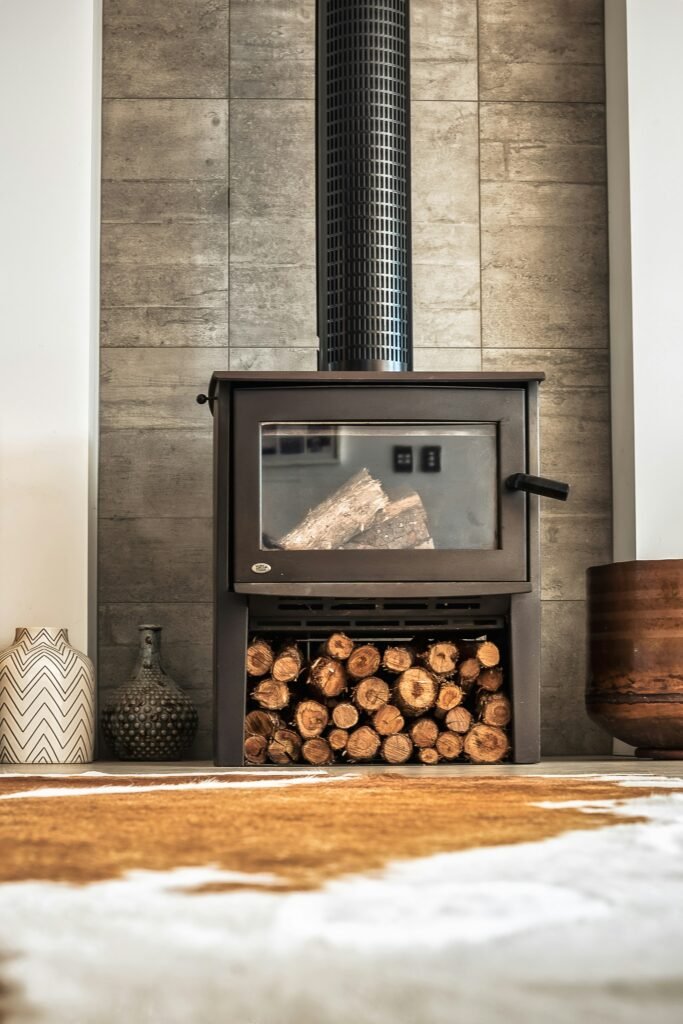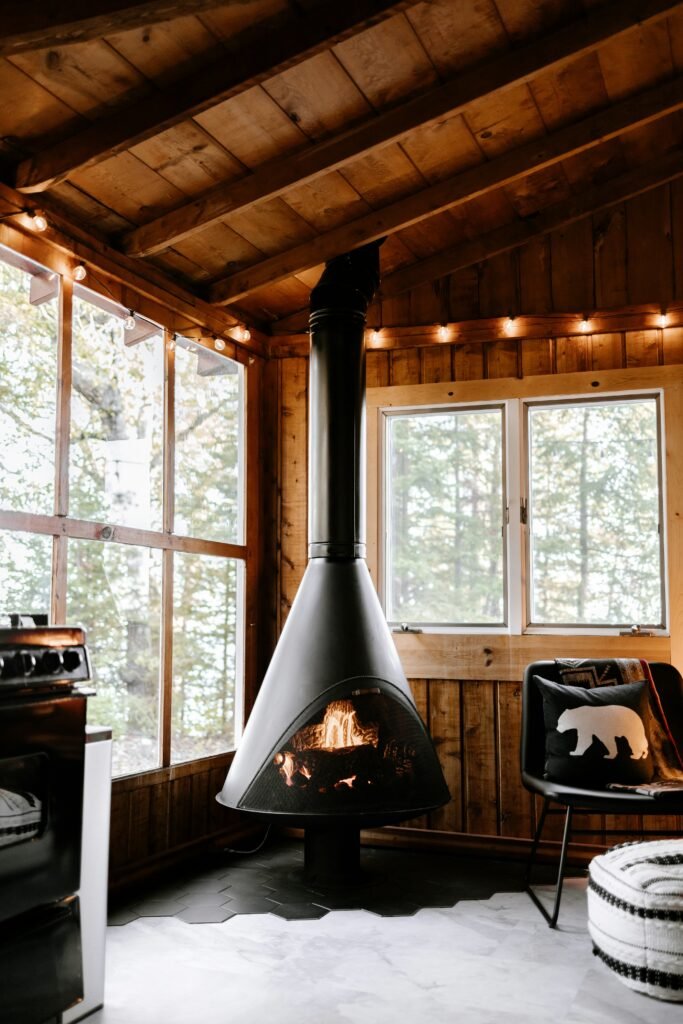Are you looking for ways to maximize the eco performance of your fireplace and achieve efficient heating? Look no further! In this article, we will explore various strategies and techniques to optimize your fireplace for better heat conservation and environmental impact. From choosing the right wood and ensuring proper airflow to utilizing smart heating accessories, we have got you covered. With these tips and tricks, you can enjoy a cozy and warm atmosphere while minimizing your carbon footprint. Let’s dive in and discover the key to achieving optimal eco performance with your fireplace.

This image is property of images.unsplash.com.
Choose the Right Fireplace
When it comes to optimizing your fireplace for better eco performance, it all starts with choosing the right fireplace. There are different types of fireplaces to consider, each with its own advantages and disadvantages.
One option to consider is a traditional wood-burning fireplace. This type of fireplace provides a cozy and comforting ambiance, but it may not be the most energy-efficient choice. Wood-burning fireplaces can lose a significant amount of heat up the chimney, resulting in wasted energy and higher heating costs.
Another option to consider is a gas fireplace. Gas fireplaces provide convenience and control, as they can be easily turned on and off with the flip of a switch. They also produce less emissions compared to wood-burning fireplaces. However, it’s important to note that gas fireplaces still require a source of natural gas, which is a non-renewable fossil fuel.
If you’re looking for a more eco-friendly option, you might consider an electric fireplace. Electric fireplaces are highly efficient and do not produce any emissions, making them a great choice for those who are looking to minimize their environmental impact. They also provide the added benefit of being able to heat a room without the need for a chimney or vent.
When choosing the right fireplace, it’s also important to evaluate the efficiency ratings. Look for fireplaces that have a high AFUE (Annual Fuel Utilization Efficiency) rating, as this indicates how efficiently the fireplace converts fuel to heat. The higher the AFUE rating, the more energy-efficient the fireplace will be.
For those who already have a fireplace and want to improve its efficiency, fireplace inserts are a great option to consider. Fireplace inserts are essentially wood or gas stoves designed to fit into an existing fireplace. They improve the efficiency of the fireplace by preventing heat loss and improving combustion.
Upgrade Your Fireplace
If you already have a fireplace and want to optimize its eco performance, there are several upgrades you can consider. One of the first steps is to insulate and seal the chimney. An improperly insulated or sealed chimney can lead to heat loss and drafts, reducing the overall efficiency of your fireplace. By insulating and sealing the chimney, you can prevent heat loss and improve the efficiency of your fireplace.
Installing a fireplace blower is another upgrade that can greatly improve the efficiency of your fireplace. A fireplace blower helps to circulate the warm air produced by the fireplace throughout the room, maximizing heat distribution. This can help you achieve more effective and efficient heating, reducing the need to rely on additional heating sources.
If your current fireplace is old and inefficient, it may be worth considering replacing it altogether. Newer fireplace models are often designed with energy efficiency in mind, featuring improved insulation, better combustion systems, and advanced technologies that help maximize heat output while minimizing heat loss.
Use Proper Fuel
Choosing the right fuel for your fireplace is essential for optimizing its eco performance. When it comes to wood-burning fireplaces, it’s important to choose sustainable and eco-friendly options. Look for firewood that is certified by programs such as the Forest Stewardship Council (FSC) or the Sustainable Forestry Initiative (SFI). These certifications ensure that the wood comes from sustainably managed forests.
In addition to choosing sustainable firewood, using seasoned firewood is also important. Seasoned firewood is wood that has been properly dried and aged, usually for a period of six months to a year. Burning seasoned firewood not only produces less emissions but also results in a hotter and more efficient fire.
For those who are looking for alternatives to wood, there are several options to explore. Pellet stoves, for example, burn small compressed pellets made from recycled materials such as sawdust or agricultural waste. They offer a highly efficient and eco-friendly heating option.
Another alternative to wood is bioethanol, a renewable and clean-burning fuel made from fermented plant materials. Bioethanol fireplaces can be a great choice for those who prioritize sustainability and want a fireplace that produces zero emissions.
Maintain Proper Airflow
Proper airflow is crucial for optimizing the eco performance of your fireplace. Regularly cleaning and inspecting the chimney is an important maintenance task to ensure proper airflow. Over time, soot and debris can build up in the chimney, blocking air passage and reducing the efficiency of the fireplace. Hiring a professional chimney sweep to clean and inspect your chimney on a regular basis is recommended to maintain optimal airflow.
In addition to cleaning the chimney, ensuring proper ventilation is essential. Adequate ventilation allows fresh air to enter the room, ensuring the fireplace has the necessary oxygen for combustion. This helps to maintain a clean and efficient burn. If your fireplace is lacking in ventilation, consider installing air intake controls or venting options that allow for proper airflow.
Using dampers is another way to control airflow and improve the efficiency of your fireplace. Dampers are metal plates that can be opened or closed to regulate the amount of air entering or exiting the fireplace. By adjusting the dampers accordingly, you can optimize the airflow and achieve a more efficient burn.

This image is property of images.unsplash.com.
Improve Combustion Efficiency
Improving combustion efficiency is an important aspect of optimizing your fireplace for better eco performance. Building proper fires is key to achieving efficient combustion. Start by using small kindling to create a base, followed by adding larger logs on top. This allows for better airflow and more efficient combustion.
Positioning firewood correctly is also important. Place the logs in a way that allows for optimal airflow, ensuring that flames can reach the wood evenly and promote efficient burning. Avoid overcrowding the fireplace with too much wood, as this can lead to poor combustion and wasted energy.
Avoid overloading the fireplace with too much wood. It’s important to find the right balance and avoid excessive heat output, as this can lead to unnecessary energy consumption and lower overall efficiency. By using the appropriate amount of firewood, you can achieve a comfortable and efficient level of heat.
Enhance Insulation
Proper insulation around the fireplace is crucial for optimizing its eco performance. Ensure that the walls, floor, and ceiling surrounding the fireplace are well-insulated to prevent heat loss. This can be done by adding insulation materials such as fiberglass or cellulose insulation.
Installing a glass fireplace door is another way to enhance insulation. Glass fireplace doors act as a barrier, preventing cold air from entering the room and warm air from escaping up the chimney. This helps to keep the heat inside the room, resulting in improved efficiency and reduced energy consumption.
Consider heat-resistant fireplace inserts as well. These inserts are designed to fit into the fireplace opening and provide an extra layer of insulation. Heat-resistant materials used in these inserts can help prevent heat from being wasted and improve the overall efficiency of your fireplace.

This image is property of images.unsplash.com.
Utilize Heat Distribution Methods
Maximizing the heat distribution from your fireplace is important for efficient heating. One way to achieve this is by using ceiling fans to circulate warm air throughout the room. By reversing the direction of the fan blades to clockwise, the warm air that rises towards the ceiling can be pushed back down, distributing it more evenly.
Installing radiant heat panels is another method to enhance heat distribution. These panels are typically installed on the walls or ceiling near the fireplace. They work by absorbing and emitting heat, providing an additional source of warmth and improving the overall comfort of the room.
Consider heat recovery systems as well. These systems capture waste heat from the fireplace and transfer it to other areas of the home. Heat recovery systems can be integrated into the fireplace itself or installed separately, reducing energy waste and maximizing the efficiency of your heating system.
Control Heat Output
Controlling the heat output of your fireplace is crucial for maintaining optimal comfort and efficiency. Installing a heat regulator can help achieve this. A heat regulator allows you to adjust the intensity of the fire, controlling the amount of heat produced. This can be especially useful during milder weather or when you only need a lower level of heat.
Utilizing zone heating is another effective way to control heat output. Zone heating involves heating specific areas of your home instead of the entire space. By closing off unused rooms and focusing on heating the areas where you spend the most time, you can reduce energy consumption and achieve greater efficiency.
Using fireplace accessories such as screens, grates, or doors can also help adjust the heat output. Screens and grates can be used to increase airflow and promote better combustion, while closing the doors or adjusting the airflow can help reduce heat output when necessary.
Implement Energy-Saving Practices
Implementing energy-saving practices can further optimize the eco performance of your fireplace. One simple practice is to turn down the thermostat of your central heating system when using the fireplace. This allows you to rely more on the fireplace for heating and reduce energy consumption.
Closing doors to unused rooms is another effective practice. By closing off rooms that are not in use, you can prevent heat from being wasted in those areas. This helps to maintain a more comfortable temperature in the rooms you are occupying, reducing the need for additional heating sources.
Using curtains or blinds to insulate windows is another energy-saving practice to consider. Closing curtains or blinds at night helps to prevent heat from escaping through the windows, improving insulation and reducing heat loss. During the day, opening the curtains or blinds allows natural sunlight to provide warmth, reducing the need for additional heating.
Seek Professional Assistance
When optimizing your fireplace for better eco performance, it can be helpful to seek professional assistance. Consulting a fireplace expert can provide valuable insights and recommendations specific to your needs. They can help you determine the most suitable type of fireplace for your home and provide guidance on upgrades or maintenance tasks.
Scheduling regular maintenance is important for ensuring optimal performance. A professional fireplace technician can inspect the fireplace, clean the chimney, and address any potential issues that may affect efficiency. By regularly maintaining your fireplace, you can maximize its lifespan, efficiency, and safety.
Consider energy audits for optimal performance. An energy audit involves a comprehensive assessment of your home’s energy usage and efficiency. By conducting an energy audit, you can identify areas where energy is being wasted and receive recommendations on how to improve the overall efficiency of your heating system, including your fireplace.
In conclusion, optimizing your fireplace for better eco performance is a worthwhile endeavor. By choosing the right fireplace, upgrading its features, using proper fuel, maintaining airflow, improving combustion efficiency, enhancing insulation, utilizing heat distribution methods, controlling heat output, implementing energy-saving practices, and seeking professional assistance, you can achieve efficient heating while minimizing your environmental impact. With these strategies in place, you can enjoy a cozy and eco-friendly fireplace experience.




